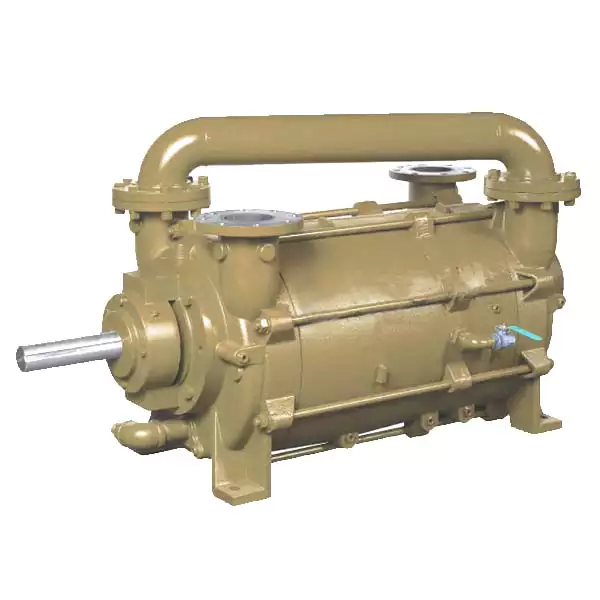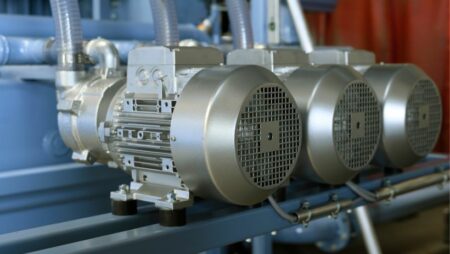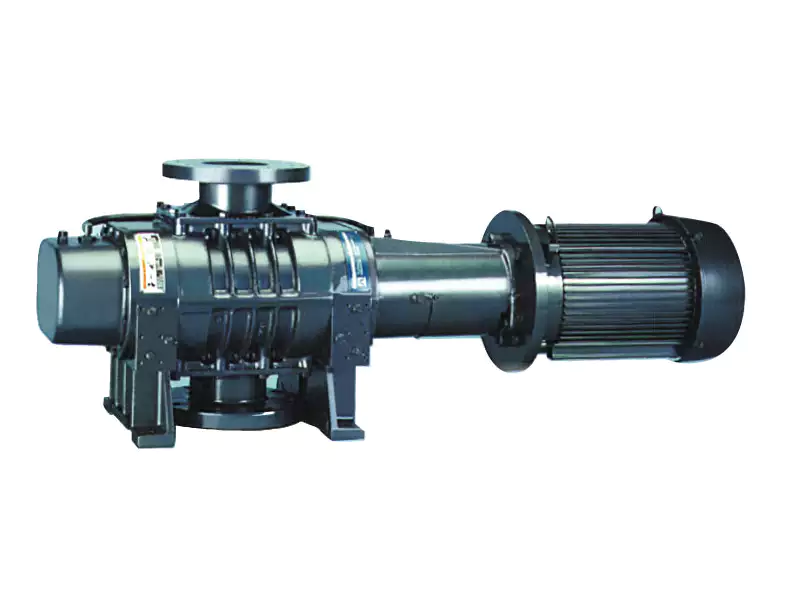产品说明
Application scope and characteristics:
Greentech International (Xihu (West Lake) Dis.) Co., Ltd is the professional vacuum pump supplier. 2BE1 series water ring vacuum pumps and compressors are the products with high efficiency and economic power, which are manufactured by our company integrating with the advanced technology of the imported products from Germany.
These series products adopt CHINAMFG and single action structure and have many advantages, such as, compact structure, convenient maintenance, reliable running, high efficiency and economic power.
The main characteristics of 2BE1 series products:
All the bearings are the imported products with the brand name of CHINAMFG orNTN for ensuring the precise orientation and the high stability during the working of the pump.
The material of the impeller is QT400 nodular iron or stainless steel for ensuring the stability when the pump works under the rigorous condition and can extend the lifetime of the pump.
The casing is made of steel or stainless steel plates to extend the lifetime of the 2BE1 series pumps.
The shaft bushing is made of stainless steel to improve the lifetime of the pump 5 times than the normal material.
The V-belt pulley (when the pump is driven by the belt) is used the high precise pulley with taper bushing to keep the reliability of the pump and extend its life. And it is also easy to mantle and dismantle.
The coupling is used to drive the pump directly. The flexible part connecting the 2 half coupling is made of polyurethane that makes the pump more reliable.
The unique design to set the separator above the pump saves the space and decreases the noise efficiently.
All the parts are cast by the resin sands that make the pump surface very smooth. It is not necessary to cover the surface of the pumps with putty and gives out the heat efficiently.
The mechanical seals (optional) are used the imported products to avoid the leakage when the pump works for a long time.
| Type | Speed (Drive type) r/min |
Shaft power kW |
Motor power kW |
Motor type |
Limited vacuum 毫巴 |
重量 (Whole set) kg |
||
| Suction capacity | ||||||||
| m 3 /h | m 3 /min | |||||||
| 2BE1 151-0 | 1450(D) 1100(V) 1300(V) 1625(V) 1750(V) |
10.8 7.2 9.2 13.2 14.8 |
15 11 11 15 18.5 |
Y160L-4 Y160M-4 Y160M-4 Y160L-4 Y180M-4 |
33mbar (-0.098MPa) |
405 300 360 445 470 |
6.8 5.0 6.0 7.4 7.8 |
469 428 444 469 503 |
| 2BE1 152-0 | 1450(D) 1100(V) 1300(V) 1625(V) 1750(V) |
12.5 8.3 10.5 15.0 17.2 |
15 11 15 18.5 22 |
Y160L-4 Y160M-4 Y160L-4 Y180M-4 Y180L-4 |
33mbar (-0.098MPa) |
465 340 415 510 535 |
7.8 5.7 6.9 8.5 8.9 |
481 437 481 515 533 |
| 2BE1 153-0 | 1450(D) 1100(V) 1300(V) 1625(V) 1750(V) |
16.3 10.6 13.6 19.6 22.3 |
18.5 15 18.5 22 30 |
Y180M-4 Y160L-4 Y180M-4 Y180L-4 Y200L-4 |
33mbar (-0.098MPa) |
600 445 540 660 700 |
10.0 7.4 9.0 11.0 11.7 |
533 480 533 551 601 |
| 2BE1 202-0 | 970(D) 790(V) 880(v) 1100(V) 1170(V) 1300(V) |
17 14 16 22 25 30 |
22 18.5 18.5 30 30 37 |
Y200L2-6 Y180M-4 Y180M-4 Y200L-4 Y200L-4 Y225S-4 |
33mbar (-0.098MPa) |
760 590 670 850 890 950 |
12.7 9.8 11.2 14.2 14.8 15.8 |
875 850 850 940 945 995 |
| 2BE1 203-0 | 970(D) 790(V) 880(V) 1100(V) 1170(V) 1300(V) |
27 20 23 33 37 45 |
37 30 30 45 45 55 |
Y250M-6 Y200L-4 Y200L-4 Y225M-4 Y225M-4 Y250M-4 |
33mbar (-0.098MPa) |
1120 880 1000 1270 1320 1400 |
18.7 14.7 16.7 21.2 22.0 23.3 |
1065 995 995 1080 1085 1170 |
| 2BE1 252-0 | 740(D) 558(V) 660(V) 832(V) 885(V) 938(V) |
38 26 31.8 49 54 60 |
45 30 37 55 75 75 |
Y280M-8 Y200L-4 Y225S-4 Y250M-4 Y280S-4 Y280S-4 |
33mbar (-0.098MPa) |
1700 1200 1500 1850 2000 2100 |
28.3 20.0 25.0 30.8 33.3 35.0 |
1693 1460 1515 1645 1805 1805 |
| 2BE1 253-0 | 740(D) 560(V) 660(V) 740(V) 792(V) 833(V) 885(V) 938(V) |
54 37 45 54 60 68 77 86 |
75 45 55 75 75 90 90 110 |
Y315M-8 Y225M-4 Y250M-4 Y280S-4 Y280S-4 Y280M-4 Y280M-4 Y315S-4 |
33mbar (-0.098MPa) |
2450 1750 2140 2450 2560 2700 2870 3571 |
40.8 29.2 35.7 40.8 42.7 45.0 47.8 50.3 |
2215 1695 1785 1945 1945 2055 2060 2295 |
| 2BE1 303-0 | 740(D) 590(D) 466(V) 521(V) 583(V) 657(V) 743(V) |
98 65 48 54 64 78 99 |
110 75 55 75 75 90 132 |
Y315L2-8 Y315L2-10 Y250M-4 Y280S-4 Y280S-4 Y280M-4 Y315M-4 |
33mbar (-0.098MPa) |
4000 3200 2500 2800 3100 3580 4000 |
66.7 53.3 41.7 46.7 51.7 59.7 66.7 |
3200 3200 2645 2805 2810 2925 3290 |
| 2BE1 305-1 2BE1 306-1 |
740(D) 590(D) 490(V) 521(V) 583(V) 657(V) 743(V) |
102 70 55 59 68 84 103 |
132 90 75 75 90 110 132 |
Y355M1-8 Y355M1-10 Y280S-4 Y280S-4 Y280M-4 Y315S-4 Y315M-4 |
160mbar (-0.085MPa) |
4650 3750 3150 3320 3700 4130 4650 |
77.5 62.5 52.5 55.3 61.2 68.8 77.5 |
3800 3800 2950 3000 3100 3300 3450 |
| 2BE1 353-0 | 590(D) 390(V) 415(V) 464(V) 520(V) 585(V) 620(V) 660(V) |
121 65 70 81 97 121 133 152 |
160 75 90 110 132 160 160 185 |
Y355L2-10 Y280S-4 Y280M-4 Y315S-4 Y315M-4 Y315L1-4 Y315L1-4 Y315L2-4 |
33mbar (-0.098MPa) |
5300 3580 3700 4100 4620 5200 5500 5850 |
88.3 59.7 61.7 68.3 77.0 86.7 91.7 97.5 |
4750 3560 3665 3905 4040 4100 4100 4240 |
| 2BE1 355-1 2BE1 356-1 |
590(D) 390(V) 435(V) 464(V) 520(V) 555(V) 585(V) 620(V) |
130 75 86 90 102 115 130 145 |
160 90 110 110 132 132 160 185 |
Y355L2-10 Y280M-4 Y315S-4 Y315S-4 Y315M-4 Y315M-4 Y315L1-4 Y315L2-4 |
160mbar (-0.085MPa) |
6200 4180 4600 4850 5450 5800 6100 6350 |
103.3 69.7 76.7 80.8 90.8 98.3 101.7 105.8 |
5000 3920 4150 4160 4290 4300 4350 4450 |
| 2BE1 403-0 | 330(V) 372(V) 420(V) 472(V) 530(V) 565(V) |
97 110 131 160 203 234 |
132 132 160 200 250 280 |
Y315M-4 Y315M-4 Y315L1-4 Y315L2-4 Y355M2-4 Y355L1-4 |
33mbar (-0.098MPa) |
5160 5700 6470 7380 8100 8600 |
86.0 95.0 107.8 123.0 135.0 143.3 |
5860 5870 5950 6190 6630 6800 |
| 2BE1 405-1 2BE1 406-1 |
330(V) 372(V) 420(V) 472(V) 530(V) 565(V) |
100 118 140 170 206 235 |
132 160 185 200 250 280 |
Y315M-4 Y315L1-4 Y315L2-4 Y315L2-4 Y355M2-4 Y355L1-4 |
160mbar (-0.085MPa) |
6000 6700 7500 8350 9450 15710 |
100.0 111.7 125.0 139.2 157.5 168.3 |
5980 6070 6200 6310 6750 6920 |
| Oil or Not: | Oil Free |
|---|---|
| 结构 | 旋转真空泵 |
| Exhauster Method: | Kinetic Vacuum Pump |
| 真空度 | High Vacuum |
| Work Function: | Pre-Suction Pump |
| Working Conditions: | Wet |
| 定制: |
可用
|
|
|---|

如何维护真空泵并排除故障?
真空泵的维护和故障排除对于确保其最佳性能和使用寿命至关重要。以下是详细说明:
真空泵的维护:
1.定期检查:定期对泵进行目视检查,检查是否有任何损坏、泄漏或异常磨损的迹象。检查电机、皮带、联轴器和其他组件是否正确对齐和处于正常状态。
2.润滑:遵循制造商的润滑指南。某些真空泵需要定期换油或润滑活动部件。确保使用正确类型和数量的润滑油。
3.油位检查:监控油封泵的油位,并将其保持在建议范围内。必要时按照制造商的说明添加或更换机油。
4.过滤器维护:定期清洁或更换过滤器,以防止堵塞并确保气流正常。过滤器堵塞会影响泵的性能并增加能耗。
5.冷却系统:如果真空泵有冷却系统,则应定期检查其清洁度和功能是否正常。根据需要清洁或更换冷却部件,以防止过热。
6.密封件和垫圈:检查密封件和垫圈是否有磨损或泄漏迹象。及时更换任何损坏或磨损的密封件,以保持气密性。
7.阀门维护:如果真空泵包括阀门,请定期检查和清洁,以确保正常运行并防止堵塞。
8.振动和噪音:监测泵是否有过度振动或异常噪音,这可能表明存在偏差、轴承磨损或其他机械问题。及时处理这些问题,防止进一步损坏。
排除真空泵问题:
1.真空度不足:如果泵未达到所需的真空度,请检查系统中是否存在泄漏、密封不当或密封件磨损。检查阀门、连接处和密封件是否泄漏,并根据需要进行修理或更换。
2.性能不佳:如果泵的性能不佳,请检查过滤器是否堵塞、润滑是否不足或部件是否磨损。清洁或更换过滤器,确保适当的润滑,必要时更换磨损的部件。
3.过热:如果泵过热,检查冷却系统是否堵塞或气流不足。清洁或更换冷却部件,并确保泵周围通风良好。
4.噪音或振动过大:噪音或振动过大可能表示对准不准、轴承磨损或其他机械问题。检查并修理或更换损坏或磨损的部件。确保旋转部件的正确对准和平衡。
5.电机问题:如果泵电机无法启动或运行不稳定,请检查电源、电气连接和电机部件。使用适当的电气测试设备测试电机,必要时咨询电工或电机专家。
6.耗油量过大:如果泵的耗油量很大,请检查是否有泄漏或其他可能导致机油损失的问题。检查密封件、垫圈和连接处是否泄漏,并根据需要进行修理。
7.异常气味:异常气味(如烧焦味)可能表示过热或其他机械故障。请及时处理,必要时咨询技术人员。
8.制造商指南:请务必参考制造商针对您的真空泵型号提供的维护和故障排除指南和建议。遵循规定的维护计划,必要时寻求专业协助。
遵循正确的维护程序并及时解决任何故障问题,就能确保真空泵的可靠运行和使用寿命。

真空泵能否用于太阳能电池板的生产?
是的,真空泵广泛用于太阳能电池板的生产。下面是详细说明:
太阳能电池板又称光伏(PV)板,是一种将太阳光转化为电能的装置。太阳能电池板的制造过程涉及多个关键步骤,其中许多步骤都需要使用真空泵。真空技术在确保太阳能电池板生产的效率、可靠性和质量方面发挥着至关重要的作用。以下是使用真空泵的一些关键领域:
1.硅锭生产:太阳能电池板制造的第一步是生产硅锭。这些硅锭是纯晶体硅的圆柱块,是太阳能电池的原材料。真空泵用于 Czochralski 工艺,该工艺包括在石英坩埚中熔化多晶硅,然后从熔化的硅中缓慢拉出单晶硅锭。在晶体生长过程中,真空泵通过去除杂质和防止污染来创造受控环境。
2.晶片化:硅锭生产出来后,要进行晶圆切割,将硅锭切成薄晶圆。线锯中使用真空泵来创造低压环境,帮助冷却和润滑切割线。真空还有助于清除切片过程中产生的硅碎片,确保切割干净、精确。
3.太阳能电池生产:真空泵在太阳能电池生产的各个阶段都发挥着重要作用。太阳能电池是太阳能电池板中将太阳光转化为电能的独立单元。真空泵用于以下过程:
- 扩散:在扩散过程中,将磷或硼等掺杂剂引入硅晶片,以产生所需的电气特性。扩散炉中使用真空泵为扩散过程创造受控气氛,并清除可能影响太阳能电池质量的任何杂质或气体。
- 沉积:在硅晶片上沉积抗反射涂层、钝化层和电极材料等薄膜。真空泵用于各种沉积技术,如物理气相沉积(PVD)或化学气相沉积(CVD),为精确、均匀的薄膜沉积创造必要的真空条件。
- 蚀刻:蚀刻工艺用于在太阳能电池上形成所需的表面纹理,从而增强光捕获并提高效率。真空泵用于等离子蚀刻或湿蚀刻技术,以去除不需要的材料或在太阳能电池上形成特定的表面结构。
4.封装:太阳能电池生产出来后,要对其进行封装,使其免受潮湿和机械应力等环境因素的影响。封装过程中使用真空泵来创造真空环境,确保从封装材料中排除空气和水分。这有助于实现适当的粘合,防止形成气泡或空隙,从而降低太阳能电池板的性能和使用寿命。
5.测试和质量控制:真空泵还可用于太阳能电池板生产过程中的测试和质量控制。例如,真空系统可用于泄漏测试,以确保封装的完整性,并检测电池板组件中任何潜在的缺陷或泄漏。真空测量技术还可用于评估太阳能电池或电池板的电气特性和效率。
总之,真空泵是太阳能电池板生产中不可或缺的设备。真空泵用于制造过程的各个阶段,包括硅锭生产、晶片、太阳能电池生产(扩散、沉积和蚀刻)、封装和测试。真空技术可实现精确控制、防止污染和高效加工,有助于生产出优质可靠的太阳能电池板。
Can Vacuum Pumps Be Used in the Medical Field?
Yes, vacuum pumps have a wide range of applications in the medical field. Here’s a detailed explanation:
Vacuum pumps play a crucial role in various medical applications, providing suction or creating controlled vacuum environments. Here are some key areas where vacuum pumps are used in the medical field:
1. Negative Pressure Wound Therapy (NPWT):
Vacuum pumps are extensively utilized in negative pressure wound therapy, a technique used to promote wound healing. In NPWT, a vacuum pump creates a controlled low-pressure environment within a wound dressing, facilitating the removal of excess fluid, promoting blood flow, and accelerating the healing process.
2. Surgical Suction:
Vacuum pumps are an integral part of surgical suction systems. They provide the necessary suction force to remove fluids, gases, or debris from the surgical site during procedures. Surgical suction helps maintain a clear field of view for surgeons, enhances tissue visualization, and contributes to a sterile operating environment.
3. Anesthesia:
In anesthesia machines, vacuum pumps are used to create suction for various purposes:
– Airway Suction: Vacuum pumps assist in airway suctioning to clear secretions or obstructions from the patient’s airway during anesthesia or emergency situations.
– Evacuation of Gases: Vacuum pumps aid in removing exhaled gases from the patient’s breathing circuit, ensuring the delivery of fresh gas mixtures and maintaining appropriate anesthesia levels.
4. Laboratory Equipment:
Vacuum pumps are essential components in various medical laboratory equipment:
– Vacuum Ovens: Vacuum pumps are used in vacuum drying ovens, which are utilized for controlled drying or heat treatment of sensitive materials, samples, or laboratory glassware.
– Centrifugal Concentrators: Vacuum pumps are employed in centrifugal concentrators to facilitate the concentration or dehydration of biological samples, such as DNA, proteins, or viruses.
– Freeze Dryers: Vacuum pumps play a vital role in freeze-drying processes, where samples are frozen and then subjected to vacuum conditions to remove water via sublimation, preserving the sample’s structure and integrity.
5. Medical Suction Devices:
Vacuum pumps are utilized in standalone medical suction devices, commonly found in hospitals, clinics, and emergency settings. These devices create suction required for various medical procedures, including:
– Suctioning of Respiratory Secretions: Vacuum pumps assist in removing respiratory secretions or excess fluids from the airways of patients who have difficulty coughing or clearing their airways effectively.
– Thoracic Drainage: Vacuum pumps are used in chest drainage systems to evacuate air or fluid from the pleural cavity, helping in the treatment of conditions such as pneumothorax or pleural effusion.
– Obstetrics and Gynecology: Vacuum pumps are employed in devices used for vacuum-assisted deliveries, such as vacuum extractors, to aid in the safe delivery of babies during childbirth.
6. Blood Collection and Processing:
Vacuum pumps are utilized in blood collection systems and blood processing equipment:
– Blood Collection Tubes: Vacuum pumps are responsible for creating the vacuum inside blood collection tubes, facilitating the collection of blood samples for diagnostic testing.
– Blood Separation and Centrifugation: In blood processing equipment, vacuum pumps assist in the separation of blood components, such as red blood cells, plasma, and platelets, for various medical procedures and treatments.
7. Medical Imaging:
Vacuum pumps are used in certain medical imaging techniques:
– Electron Microscopy: Electron microscopes, including scanning electron microscopes and transmission electron microscopes, require a vacuum environment for high-resolution imaging. Vacuum pumps are employed to maintain the necessary vacuum conditions within the microscope chambers.
These are just a few examples of the wide-ranging applications of vacuum pumps in the medical field. Their ability to create suction and controlled vacuum environments makes them indispensable in medical procedures, wound healing, laboratory processes, anesthesia, and various other medical applications.


editor by CX 2023-12-04